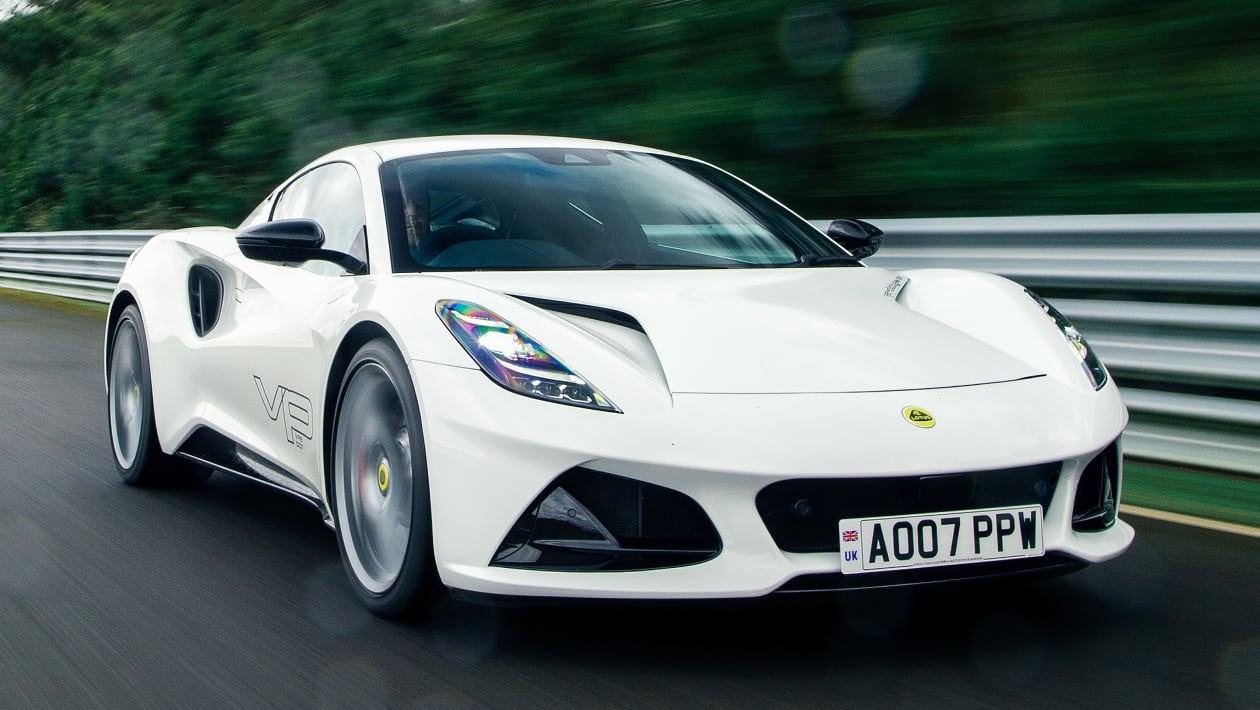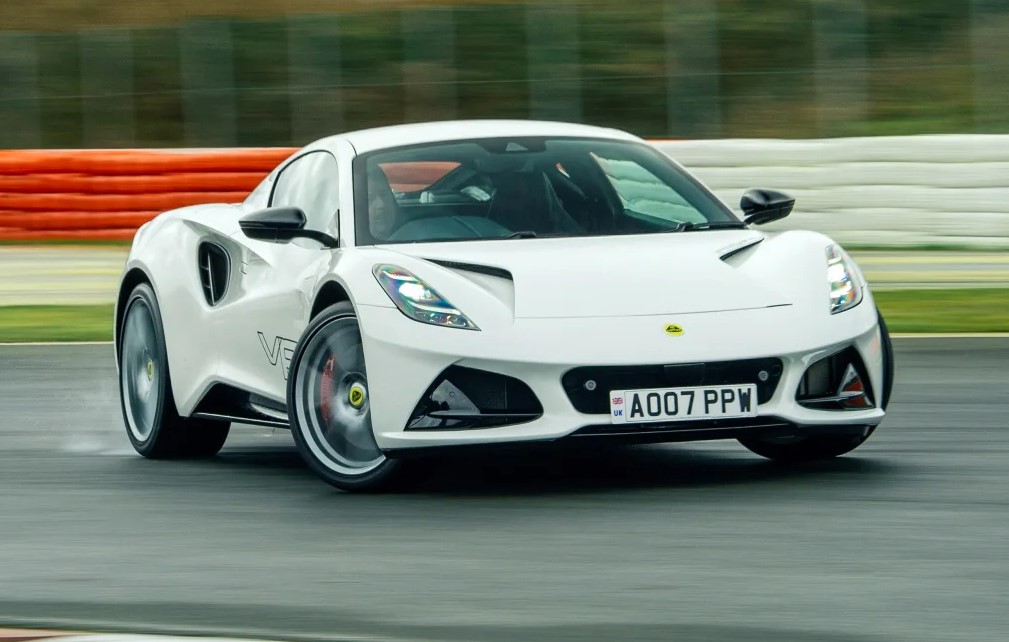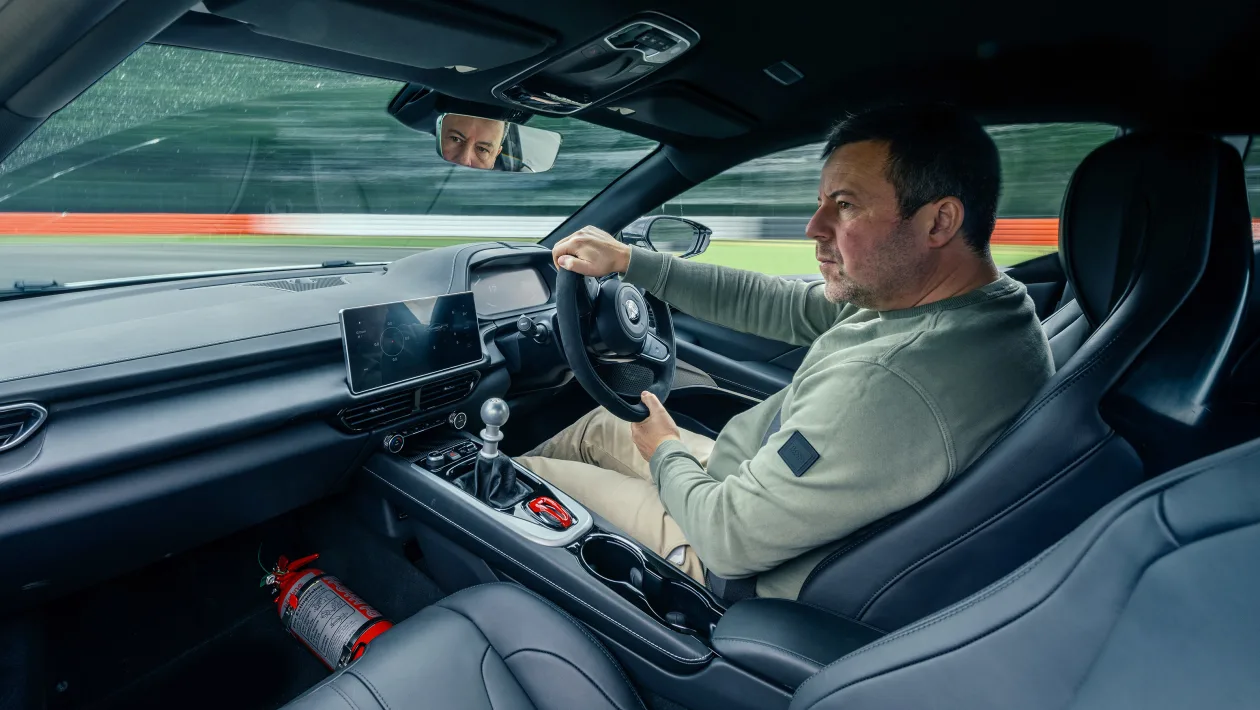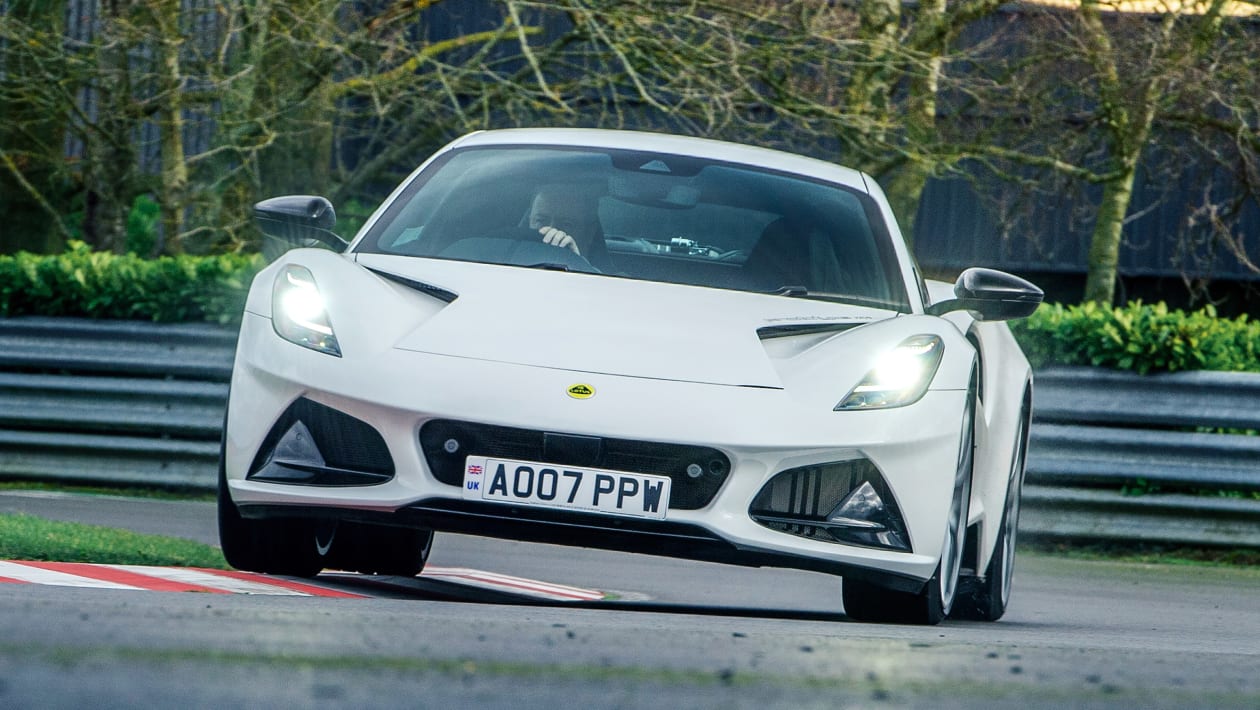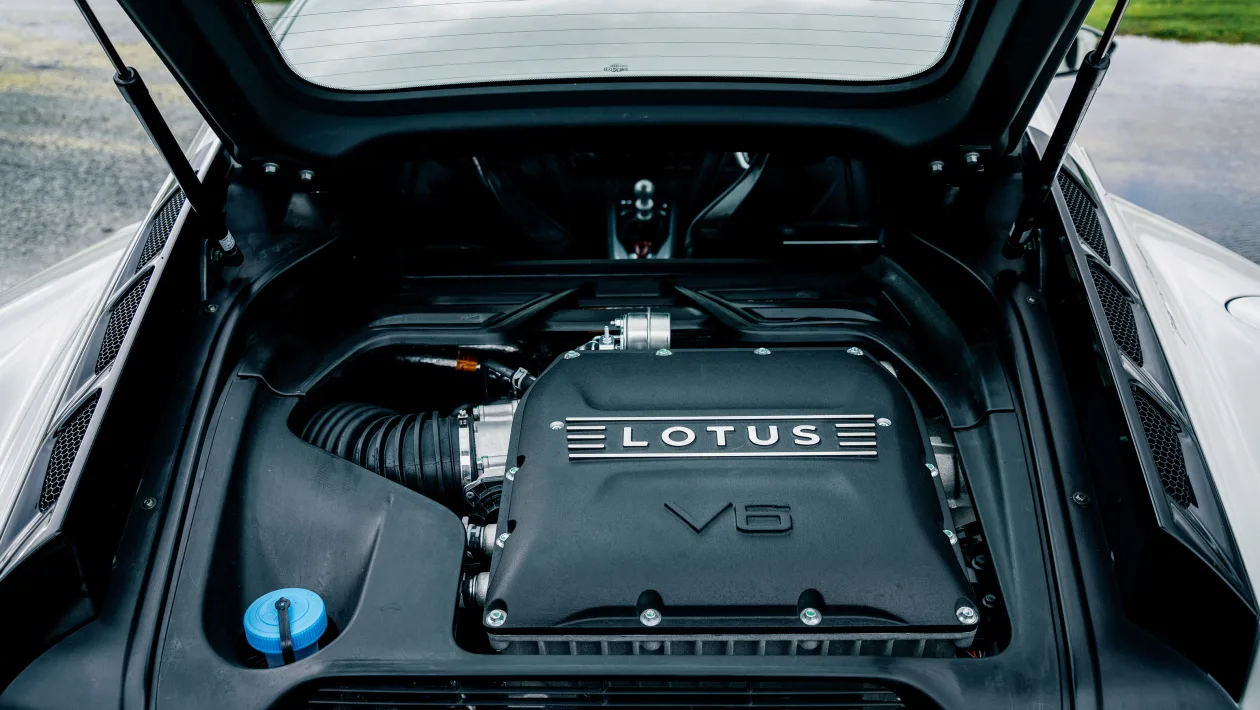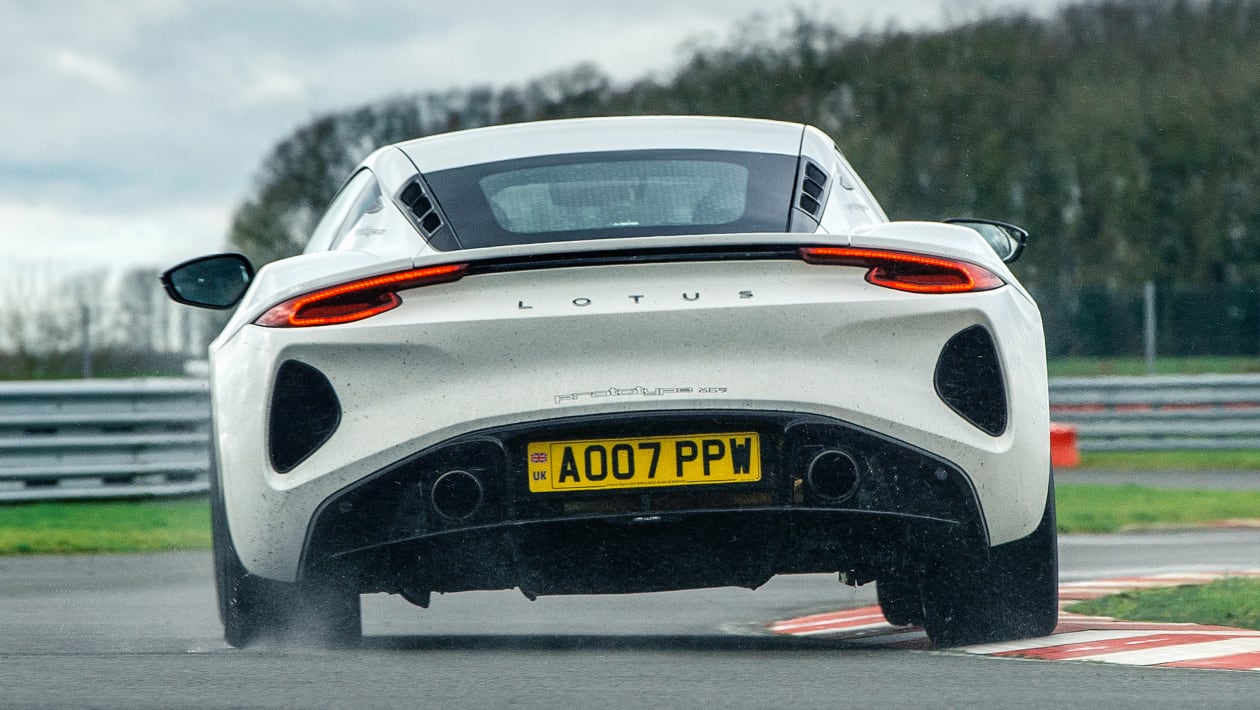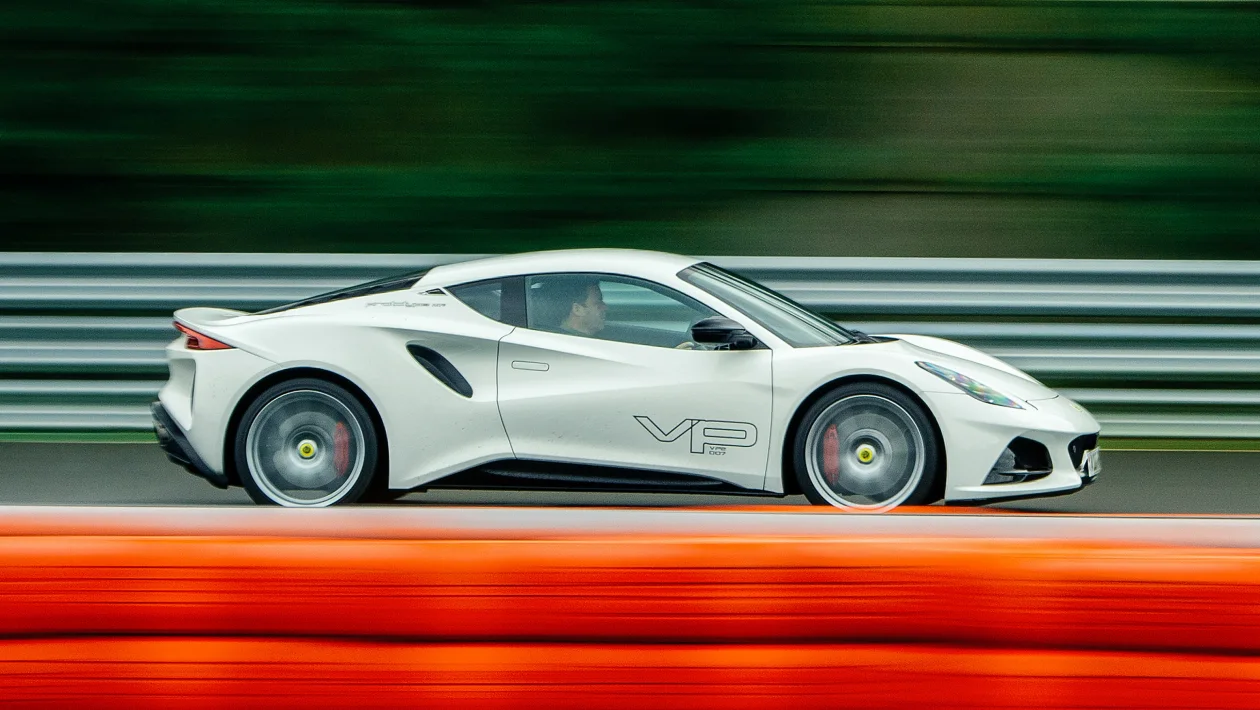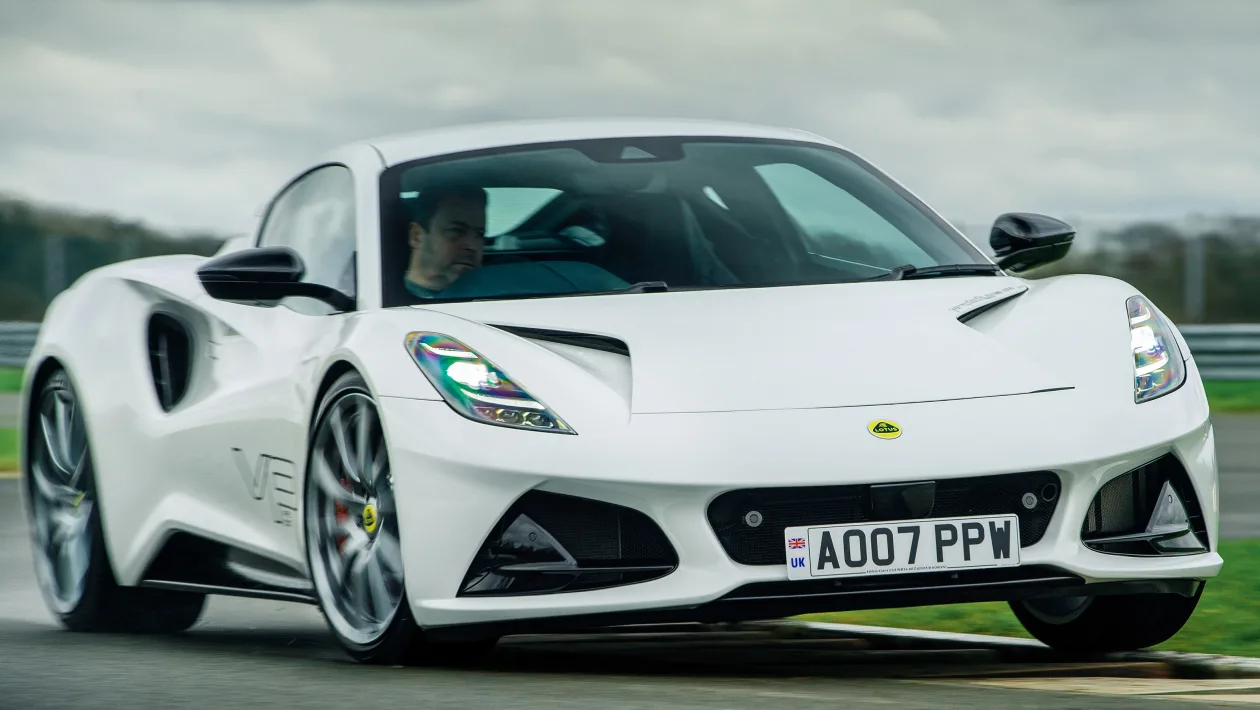We hit the road in a prototype version of the new Lotus Emira ahead of its Australia arrival to see if it’s time to get excited.
The Emira is a simultaneous first and last for Lotus: the first nose-to-tail product of the exciting and rejuvenating Geely era, but the last model to be powered by an internal combustion engine before the company morphs into an EV-only brand.
As part of that transformation Lotus will soon launch an SUV, too, but before that, is the Emira a fitting sign-off for combustion-engined Lotuses? We’re at Lotus’ Hethel test track to find out, driving a V6-powered Emira (a four-cylinder turbo model using an AMG-sourced engine will follow). Our car is a development prototype that is 85 per cent representative of what we can expect.
Firstly, it looks the part, with styling referencing Lotus’s back catalogue and some scaled-down Evija hypercar cues. It’s stimulatingly fresh, and pleasingly familiar. Our car is a manual with Tour suspension, and firing it up, the Toyota-sourced 295kW supercharged V6 starts with a throaty snarl.
The steering uses hydraulic power assistance and immediately feels different to the electric systems we’ve become used to over the years. It has more weight, but the effort required remains consistent and true as you work the steering through quick corners. It takes some getting used to, not because it’s counterintuitive, but because, unlike the vast majority of current high-performance cars, the rate of response is actually natural, fluid and assured. It’s perfectly judged and intuitive; you can be gentle in fast turns, or punch in your inputs in slower corners and the Emira responds.
Like a lot of great Lotus models, there’s a little body roll as the Emira begins to grip and absorb the load. This might be more obvious with Tour suspension than the optional Track-tuned springs and dampers, but it helps you build a detailed sense of how hard the car is working and how much grip is left to be squeezed from the tyres.
The chassis tune is the latest iteration, but not the final version, so we’re told there will be a gain in both ride comfort (less obvious on the smooth test track) and steering feel.
There’s a beautiful level of composure, though, with the chassis offering plenty of support beneath you and telegraphing the mildest understeer as you squeeze the throttle, or easily controlled oversteer if you make more aggressive inputs to bring the tail into play. The Sport driving mode allows the car to slide, with its attitude being held softly by the electronics.
According to Lotus director of attributes and product integrity, Gavan Kershaw, the sensitive ESC computes myriad parameters and continually adjusts its hold over the car accordingly.
Lotus’ latest model has all of the dynamic hallmarks you’d expect from the British sports car maker; although it’s a weightier machine sitting on 20-inch wheels and therefore lacks a little delicacy, it crucially blends precision with feel and malleable limits, and offers a warmth to the way it works.
The Emira feels as strong and lusty as you’d expect of a 295kW car weighing 1400kg+; 0-100km/h takes 4.3 seconds, helped by short, snappy gear ratios. You need to work the transmission and be deliberate when guiding the gearstick from second to third, but Kershaw reckons there’s a bit more finessing left to do here. Downshifts are a delight. With 420Nm of torque, you can also leave it in gear and let the engine’s muscle do the work.
The brakes offer power and progression, and stand up well to a stern test around Hethel. Kershaw says there will be more feel come sign-off, but it’s already obvious that the Emira has great stoppers.
When it comes to usability, this is one Lotus that’s easy to get in and out of, and that hasn’t always been true. While the interior is plain and simple, with clean lines and a welcome sense of space; two people can sit side-by-side without rubbing shoulders. There’s even useable space for storage behind the seats, and the cabin successfully creates a sense of sports car snugness without the usual claustrophobia.
Much of what makes the Emira feel so special is in the way it steers and how it responds without feeling at all contrived. The manual transmission and vocal V6 should be savoured, too. The Emira is shaping up to be a memorable machine.
| Model: | Lotus Emira V6 First Edition |
| Price: | $184,990 (Australia) |
| Engine: | 3.5-litre supercharged V6 |
| Power/torque: | 295kW/420Nm |
| Transmission: | Six-speed manual, rear-wheel drive |
| 0-100km/h: | 4.3 seconds |
| Top speed: | 300km/h |
| Economy: | TBC |
| CO2: | 245g/km |
| On sale: | July 2022 |
Richard Meaden




